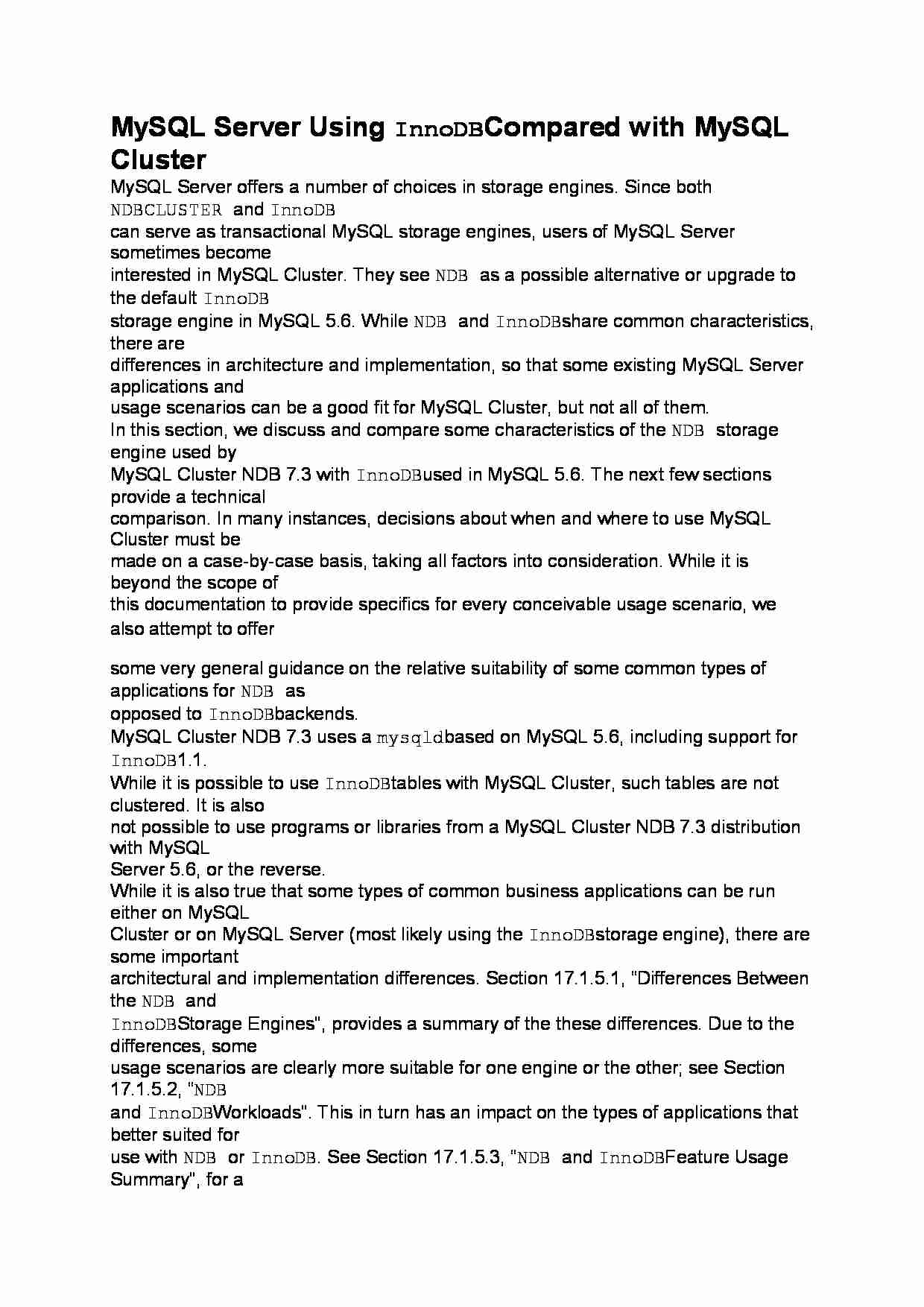To tylko jedna z 2 stron tej notatki. Zaloguj się aby zobaczyć ten dokument.
Zobacz
całą notatkę


MySQL Server Using InnoDB Compared with MySQL Cluster
MySQL Server offers a number of choices in storage engines. Since both NDBCLUSTER and InnoDB
can serve as transactional MySQL storage engines, users of MySQL Server sometimes become
interested in MySQL Cluster. They see NDB as a possible alternative or upgrade to the default InnoDB
storage engine in MySQL 5.6. While NDB and InnoDB share common characteristics, there are
differences in architecture and implementation, so that some existing MySQL Server applications and
usage scenarios can be a good fit for MySQL Cluster, but not all of them.
In this section, we discuss and compare some characteristics of the NDB storage engine used by
MySQL Cluster NDB 7.3 with InnoDB used in MySQL 5.6. The next few sections provide a technical
comparison. In many instances, decisions about when and where to use MySQL Cluster must be
made on a case-by-case basis, taking all factors into consideration. While it is beyond the scope of
this documentation to provide specifics for every conceivable usage scenario, we also attempt to offer
some very general guidance on the relative suitability of some common types of applications for NDB as
opposed to InnoDB backends.
MySQL Cluster NDB 7.3 uses a mysqld based on MySQL 5.6, including support for InnoDB 1.1.
While it is possible to use InnoDB tables with MySQL Cluster, such tables are not clustered. It is also
not possible to use programs or libraries from a MySQL Cluster NDB 7.3 distribution with MySQL
Server 5.6, or the reverse.
While it is also true that some types of common business applications can be run either on MySQL
Cluster or on MySQL Server (most likely using the InnoDB storage engine), there are some important
architectural and implementation differences. Section 17.1.5.1, “Differences Between the NDB and
InnoDB Storage Engines”, provides a summary of the these differences. Due to the differences, some
usage scenarios are clearly more suitable for one engine or the other; see Section 17.1.5.2, “NDB
and InnoDB Workloads”. This in turn has an impact on the types of applications that better suited for
use with NDB or InnoDB. See Section 17.1.5.3, “NDB and InnoDB Feature Usage Summary”, for a
comparison of the relative suitability of each for use in common types of database applications.
For information about the relative characteristics of the NDB and MEMORY storage engines, see When to
Use MEMORY or MySQL Cluster.
... zobacz całą notatkę




Komentarze użytkowników (0)